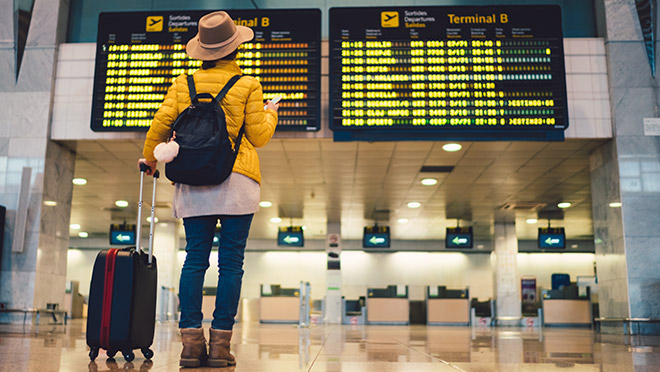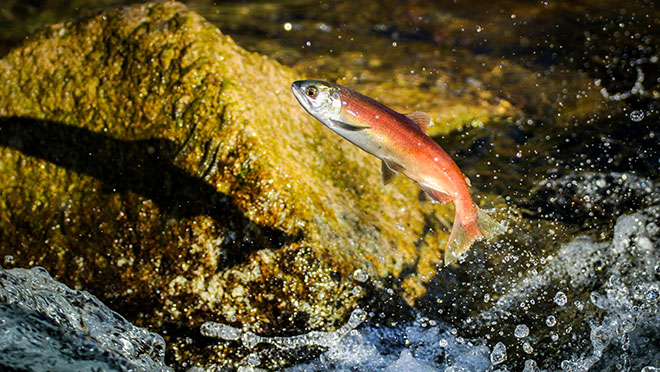10 actions to consider in support of Earth Day

Will your 'new normal' be easier on the planet?
If you're like most Canadians, you did a great job of lowering your carbon footprint over the past year. Then again, most of that probably had to do with restrictions on travel during the COVID-19 pandemic.
So the question is, what will you – and others in the developed countries of the world – do when restrictions are eased? Will you drive as much as you did in the past, and will you meet your pent-up appetite for travel by flying far and often? Climate scientists suggest that a return to anything near normal will almost kill any chance we have to ease the effects of climate change down the road.
In recent years (2020 excepted), Canadians have had an average carbon footprint of over 15.2 metric tonnes, compared to Europeans at 6.4 tonnes, and the world average of 5 tonnes. So we're contributing way more than our fair share of a bad thing.
Earth Day is on April 22. The day isn't solely about climate action. But while regenerative agriculture, equity and environmental justice, citizen science and cleanups are also initiatives of EarthDay.org, their main focus is fighting global warming. The latest Intergovernmental Panel on Climate Change (IPCC) report concludes that if the world fails to meet its CO2 reduction targets in the next nine years, global warming will lead to "irreversible loss of the most fragile ecosystems, and crisis after crisis for the most vulnerable people and societies."
What can you do to join the fight? Here are 10 ways you can help.
1. Measure your footprint
Until you know where your lifestyle and choices are producing the most carbon emissions, you won't know how best to help. It will take you 15 to 20 minutes to complete the carbonfootprint.com calculator and you'll learn a lot. You'll discover just how much the way you travel, the things you eat, and the way you use energy at home, factor in.
2. Drive and fly less
The big carbon emitters for most Canadians are cars and planes. Look for alternatives to both, and be strategic when you feel the need to use them. This could mean buying an electric vehicle, carpooling, or limiting weekly drives by, for example, combining a sports field drop-off of your kid with grocery and other errands en route. And instead of flying off on two or three vacations a year, consider fewer flights, for longer trip durations.
3. Eat more vegetables and fruits
Reducing your meat consumption isn't just the big change in the updated Canada Food Guide for healthy eating. It's also a way to reduce carbon emissions associated with meat production. If you're curious how your diet is impacting greenhouse gas emissions, check the fun and quick New York Times Diet and Climate Change Quiz.
4. Join Team Power Smart, take a 10% Reduction Challenge
BC Hydro's renewable, hydroelectric power generation means our electricity carries a much lower carbon footprint than in most other areas of North America. But reducing home energy use still makes sense. Make a commitment to reducing electricity use by joining Team Power Smart and starting a 10% Reduction Challenge that could earn you $50 if you hit that target over 12 months.
5. Limit your use of plastics
Check how much plastic you use by trying earthday.org's plastic calculator, then take steps to reduce how much you use. Little things such as using a reusable water container – and refilling it with B.C.'s excellent tap water – help reduce your footprint.

6. Give to an environmental organization (or volunteer)
BC Hydro is proud to support a number of B.C. community and environmental organizations through our community grants program and our partnership in the Fish & Wildlife Compensation Program. Think about donating to groups or pitching in as a volunteer for specific efforts in your community.
7. Use an app to help collect science data
Earthday.org has launched an app that helps turn anyone into a citizen scientist. The Global Earth Challenge app is a way to help monitor and mitigate threats to environmental and human health.
8. Get out the camping gear, and book now
With COVID-19 restrictions still in effect, the B.C. vacation is still going to be the go-to for most of us this summer. And that means that booking a camping spot at a provincial park – especially on weekends – is tougher than ever. Remember that the BC Parks reservations site starts making bookings three months ahead of camping dates, so we're already into July reservations. Miss out? You can take a shot at BC Hydro's recreation sites, which are first-come, first-served, with no reservations.
9. Unsubscribe from catalogs, go digital to save paper
If you want to cut down on your paper use, start by unsubscribing from any product catalogs you receive. Then put aside some time to opt for digital bills and receipts, including going paperless with MyHydro. Want to go further? Contribute to reforestation through earthday.org's $1-per-tree The Canopy Project.
10. Consider investing in ESG funds
Interest and investment in so-called ESG funds increases each day, and a lot of ESG (Environmental, Social, Governance) funds are performing well. Just do your homework to ensure that an ESG fund is actually delivering the good it claims. Good sources of information include Corporate Knights and Morningstar.ca.
Related links: